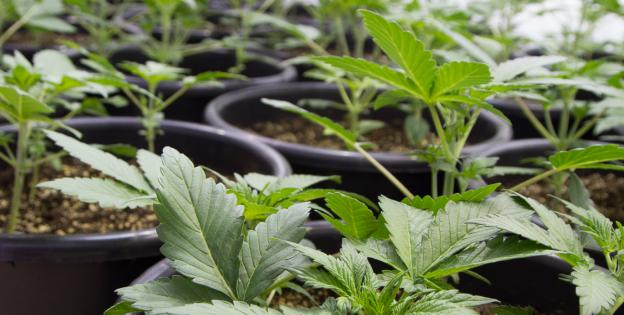- We know that cannabis cultivation can be challenging, especially for beginners.
- On a daily basis we receive lots of questions from both amateur and experienced growers who need advice on how to grow our genetics.
- We have made this video to clarify some concepts regarding the differences between the life cycles of autoflowering and feminised plants.
- Learning about the characteristics of each genetic will help you better understand their individual needs. Let’s get started!

We have made this video to resolve some of the questions that you frequently ask us, to help you better understand the differences between marijuana strains before you grow them.
The life cycle of automatic strains is quite peculiar; it's a bit like activating a time bomb: once the automatic seed germinates, the countdown starts. But let's take it one step at a time. First of all, don't be fooled by their name. You can be assured that feminised and autoflowering seeds are both feminised or, in other words, female.
However, there are some differences between them that are worth pointing out:
The most important difference... their life cycle
Autoflowering seeds have a much shorter life cycle than feminised varieties. Their full cycle, from seed germination to harvest, is invariably of around two and a half months. After a 30-day vegetative period, autoflowering plants automatically burst into bloom; hence their name. It is important to make sure that the plant grows as vigorously and quickly as possible within those 30 days so as to achieve top performance.
Why do feminised plants work differently?
This automatic switch does not occur with the 'normal' feminised plants. They need a change in the amount of hours of light that they are exposed to so they can transition from the vegetative to the flowering phase. As long as the light period is longer than the darkness period, the plant keeps growing. But as soon as it is exposed to a 12/12 photoperiod (i.e. 12 hours of light followed by 12 hours of darkness), it starts flowering. So what does this mean? It means that we have greater control of the end of the growing phase, so we can make the plant grow as big as we wish, whilst having more room for error.
This is why, in the case of classic feminised strains, days are counted from the start of the flowering period and not from the start of the 'life cycle', as this will vary depending on the grower.
When grown outdoors, feminised strains start flowering towards the end of the summer, when days become shorter, whereas indoor crops do so when the photoperiod is changed from 18/6 to 12/12. If we want extremely big outdoor plants, all we need to do is germinate the seeds several months before the photoperiod changes, weather permitting, and so the growing period will be longer. This can be useful if you want to use a technique like SCROG, for instance. However, this is not recommended for autoflowering varieties as there is not enough time (the vegetative period is 30 days long, although the plant keeps growing for a few more weeks after it has flowered.)
By now you'll be wondering… So what about autoflowering seeds?
These genetics inherit their speed from Ruderalis, a type of marijuana native to Siberia that has developed great growth speed in order to adapt to the harsh climate conditions of the area. The most important trait of the autoflowering genetics is their automatic switch to the flowering period, which does not require a change in the hours of light exposure that the plant receives.
These genetics also keep some benefits that make them stand out above the classic 'feminised' strains. Firstly, as they are not photo-dependent, you don't need to worry about light pollution. This makes them ideal for the urban grower: they can be placed in balconies without the worry of them being affected by street lamps at night. Secondly, as their life cycle is shorter, the risk of them being attacked by pests is lower. On the contrary, 'classic' feminised strains may be more vulnerable but will reward you with gourmet flavours and aromas worth waiting for. And what's more, their buds are often denser as they have more time to form.




Comments from our readers
There are no comments yet. Would you like to be the first?
Leave a comment!Did you like this post?
Your opinion about our seeds is very important to us and can help other users a lot (your email address won't be made public).